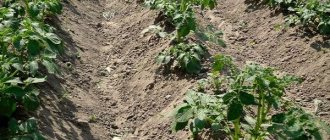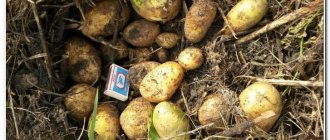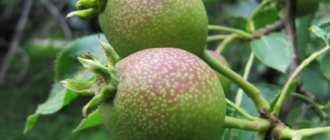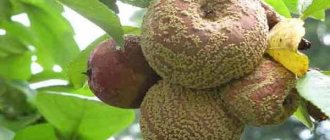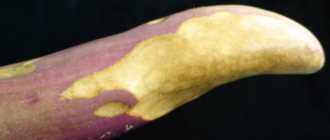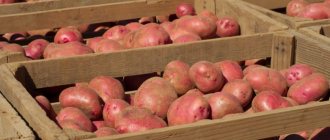Why do potatoes crack? Summer residents and gardeners put their souls into their plantings, and in return they receive a good quality harvest. However, this is not always the case. Take at least potatoes. The planting material was selected, the soil was fertile, the rules of crop rotation were observed, all agrotechnical practices were carried out on time, and for some reason the dug up tubers were cracked.
It's a shame because how much work was put into raising them. Most of them are suitable for consumption, but they cannot be used for planting. It is unknown what caused the damage to the crop, perhaps some kind of disease. Why do potatoes crack when they grow? And how to avoid such trouble? Let's try to figure it out.
Possible causes of cracks in tubers
Let us immediately note that such defects are not necessarily the result of improper cultivation of the crop. Their appearance may be due to factors that do not depend on a person or depend only to a certain extent. This is a sharp change in weather conditions, the vital activity of microorganisms, and the influence of insect pests. For example, heavy rains after a long drought can lead to such consequences. Also, cracks and other defects appear as a result of the harmful effects of viruses, fungi and bacteria. Let's start with them.
What to do with cracked potatoes?
Potato diseases are not terrible for human health - everything that can be peeled is undoubtedly suitable for human consumption.
What to do if it was not possible to save the potatoes from cracking?
You should not immediately throw away damaged tubers - you need to carefully sort them out immediately after digging them up, sorting out too cracked potatoes. It should be used first.
Can be used for cooking, as animal food . Some owners put these potatoes, with minor damage, into storage for planting next year. You should not do this - the risk of cracks only increases. The harvest for the next season will be even more spoiled , and even stable climatic conditions are not able to prevent the problem.
Careful annual selection of seed material is the key to a good harvest.
Diseases that can cause cracks in potatoes
Without disease prevention, you can be left without a harvest altogether. Different diseases affect different parts of plants: some affect only the tubers, others affect the tops, and others affect both the root and above-ground parts.
More often than others, potatoes are affected by late blight, the causative agent of which is a fungus. Its spores penetrate into the soil along with moisture. If conditions are favorable, the infection spreads quickly and in a short time (several days) can infect the entire area under the potato.
There are several ways to prevent and control late blight, but individually they have low effectiveness. Only an integrated approach will help here. Experienced gardeners fight fungus as follows:
- healthy seed material is carefully selected for planting;
- try not to plant varieties with different resistance to this disease next to each other;
- spray the plantings with a solution of copper sulfate with the addition of potassium permanganate.
Common scab is another serious enemy of culture. On tubers affected by it, brown spots first appear, then ulcers and cracks. As a rule, this disease appears on potatoes that have been fertilized with fresh manure and unrotted plant debris. Treating the area with ammonium sulfate and treating the planting material with Fito Plus will help get rid of scab.
Blackleg, a disease common in all potato growing regions, can cause significant damage to plantings. Its pathogen quickly adapts to any conditions and easily tolerates both heat and cool weather. The bacteria first “attack” the lower part of the plant stem, and then move on to the tubers, as a result of which the latter rot and become covered with ugly cracks. To stop the spread of the disease, planting potatoes must be treated with the biological preparation Fitosporin-M, and the harvested crop must be dried well before storing in a basement or cellar, which must be disinfected.
Prevention of deformity in potato tubers
It is possible to prevent cracking of tubers and their abnormal growth. To do this, it is necessary to grow it in compliance with the rules of agricultural technology, to prevent the occurrence of diseases and pests.
We recommend reading
Instructions for use of the drug Taboo for the Colorado potato beetle
How and with what to fight late blight on potatoes
How to get rid of scab on potatoes, what is the best treatment
What is the best way to fertilize the soil for potatoes in the fall?
Compliance with the rules of agricultural cultivation
Let's start with preparing the soil. As already mentioned, it should be light and loose. If the site has loam or clay, the soil must be dug well, to a sufficient depth, and rotted sawdust and coarse sand must be added to it (at least 1 bucket per 1 sq. m). If the soil is acidic, add chalk, ash, and lime. You cannot fertilize with fresh manure - it contains a lot of nitrogen, and it can cause potatoes to become infected with scab. After harvesting potatoes, it is advisable to sow the area with green manure, which will fertilize the soil and reduce the likelihood of the spread of pathogens.
It is important to take a responsible approach to the choice of planting material - all potatoes must be healthy, without signs of disease, and not deformed. Varieties must be selected with resistance to common diseases.
It is important to follow the watering schedule, not to allow the soil to dry out too much in the heat, and not to flood the beds after a long drought. Many vegetable growers recommend watering vegetables 1-2 times a week in hot summer conditions. Plants need water most when they gain vegetative mass, and after intensive tuber formation, the need for liquid decreases.
After watering, the beds need to be loosened so that air penetrates to the roots. It is necessary to fertilize potatoes in time, but not to overfeed them - an excess or deficiency of microelements can also cause cracking. It is important to keep the beds clean, remove weeds, especially wheatgrass, its roots can pierce the tubers; wireworms also live on this plant.
Disease Control
Dressing tubers is an important and mandatory stage in growing potatoes. The causative agents of many diseases can remain on their peel, which can be destroyed with fungicides. The biological product Fitosporin is often used in households, and plants are also treated with it - 3 times per season. For black scab, it is necessary to use more powerful remedies - Fenoram Super, Colfugo, Mancozeb; from black leg - Topsin-M, Energen, Vitaros, Effecton; from fomoz - Maxim, Titus, Baktofit, Vist.
For many fungal diseases, a proven remedy is used - Bordeaux mixture, copper solution (dissolve 1 tablespoon per 1 liter of water) or preparations containing copper, for example, HOM.
You can pickle potatoes in solutions of boric acid, potassium permanganate, and zinc sulfate. It doesn’t hurt to germinate it; this will also help it avoid infection after planting.
If the bushes cannot be cured, they must be dug up, taken out of the site and burned; they cannot be left in the beds. Sprinkle the soil with a fungicide solution or sprinkle it with ash. Spray all other plants with fungicidal preparations for prevention. Do not plant potatoes in this area for at least 4 years, do not grow crops belonging to the nightshade family on it. To treat the soil, grow green manure in the beds for at least 1 season.
Pest Control
To destroy nematodes, treat the soil with special preparations even before planting potatoes (at least 1 month in advance). Phosfamide, Nemagon, Bazudin, Carbation, etc. are suitable for use. Against wireworms and mole crickets, either agrochemicals (Entocid, Actorofit) are also used or plants with a repellent odor are planted next to the beds. It is necessary to remove all growing weeds in which pests can hide.
Insects
Insect pests can negatively affect the quality of the crop. Most often, tubers are spoiled by:
- Colorado potato beetle and its larvae;
- wireworm;
- mole cricket;
- potato moth.
The most common pest is the Colorado potato beetle. It is not so much the plant itself that is dangerous, but its larvae, which eat the above-ground parts of plants at high speed. To combat them, special drugs are used, which can be purchased in specialized stores. Owners of small gardens practice manual collection of beetles and their larvae with subsequent destruction outside the site.
Tubers are spoiled by wireworms that live in the ground for up to 4 years. An effective method of combating them is considered to be regular weeding, as well as sprinkling wood ash on planting potatoes. No less reliable protection will be lime and eggshells, which are placed in the holes during planting.
The mole cricket is the most voracious pest, eating the entire root system along with the tubers. As a rule, it starts where the soil is waterlogged. To prevent the appearance of mole crickets in the garden, plants that have a strong repellent odor should be planted next to the potatoes. For example, white mustard or calendula. Otherwise, you will have to resort to the help of biological products such as Entocide or Actorofit.
There is one simple prevention against potato moth - planting tubers to a depth of 15 cm or more. The pest will not get that deep. If the planting material is higher and infection still occurs, the potato moth and its larvae can be destroyed with the insecticidal preparations Dendrobacillin or Bitoxibacillin.
Sudden change in temperature
High humidity levels and prolonged rains negatively affect the potato harvest. Such weather conditions contribute to the proliferation of fungi, root crops become deformed, and furrows appear on the potatoes. Due to excessive moisture, potato growth accelerates. At the same time, the cells of the tuber shell do not keep up with the rate of increase in the cells of the pulp. As a result, under internal pressure, the peel bursts and a crack forms. Also, the exposed flesh of the fruit can be affected by fungus, viruses, bacteria or insects.
A sharp change in temperature and a prolonged lack of precipitation after prolonged rainfall will have a negative impact on the quality of the crop. During periods of prolonged drought, the risk of cracking of root crops increases. Such potatoes can be eaten, provided there are no associated plant diseases. Moderate and timely growth of the vegetable occurs in soil in which there is no excess or lack of water.
Improper watering
Violation of the watering regime is another reason for the formation of cracks in potatoes. Before seedlings appear on the surface of the soil, you should not irrigate the plantings, since the roots of the plants are not yet strong and can rot in wet soil. Experienced gardeners recommend watering after the sprouts appear. During this period, young plants gain green mass and need a lot of moisture. The second abundant watering can be carried out at the very beginning of the formation of tuber crops. Before watering potatoes, it is necessary to carefully weed out the weeds, and 2 weeks after watering, spud up the bushes.
It should be noted that not all varieties respond positively to increased soil moisture. Potato growers have long noticed that the tubers of early potato varieties are more prone to cracking after additional moisture than mid-early or medium-early ones. For example, Svitanok Kyiv cracks much more often than most Dutch varieties of medium and late ripening. At the same time, due to waterlogging, rot is often observed along with cracks, and part of the crop has to be simply thrown away.
Why do potatoes crack, burst, or become ugly in the ground?
Undesirable weather conditions, soil type and properties, diseases and pests, as well as improper watering can cause cracks in potatoes. Let's consider each case in more detail.
Weather
Weather with prolonged rains, when water stagnates in the soil, contributes to the formation of not only cracks, but also various deformations of tubers.
In moderately moist soil, tuber growth occurs evenly.
If the soil does not dry out, the plant begins to actively absorb moisture, initially accelerating its growth. The tubers are also saturated with water.
Flesh cells grow faster than skin cells. At some point, the internal pressure becomes so strong that the potato bursts . If the exposed pulp is not affected by rot, bacteria, viruses, or pests, then the open areas will be covered with peel.
Diseases
The main diseases that disfigure tubers with cracks of various shapes and depths, as well as other deformations and even rot:
- scab;
- blackleg;
- button rot.
Potatoes affected by scab are visible only after digging out a large number of small, ugly cracks of arbitrary shape. It is difficult to understand from the state of the plant that it has been affected by a disease.
But the black leg often affects the above-ground part of the plant. Stems with leaves begin to turn yellow and dry out; near the ground they can acquire a black, as if burnt, color. The tubers burst and rot from the inside, emitting an unpleasant, pungent odor.
The fungus Phoma, or button rot, penetrates the tubers through mechanical damage even before sowing. Infection can occur during harvesting or transportation of crops. Developing in potatoes, the fungus leads to the appearance of round ulcers. In the affected areas, the pulp dries out and voids form. If the development of phomosis occurs in the ground during plant growth, then dark oblong spots also form on the leaves.
Pests
Many pests love to feast on and live in potato tubers , which leads to the appearance of traces of their vital activity in the form of cracks, ulcers, and holes.
Various species of nematodes , microscopic worms often a tenth of a millimeter in size, live on the roots of the nightshade family. Some of them need potato bushes for reproduction. If the golden nematode generally inhibits the development of roots and plant growth, preventing tubers from forming, the stem nematode penetrates under the skin. Over time, the pulp in the affected areas becomes loose, and cracks with rot - dry rot - form.
The omnivorous mole cricket is not only a potato pest. Its presence on the site can be easily determined by the characteristic cricket chirping. When it comes across tubers, it bites off the pulp and makes passages in it.
The worm-like larvae of click beetles - wireworms - gnaw through tunnels in potatoes, opening the gates for fungi, parasites and pathogens. Sometimes these pests can be found inside the tuber. The roots and bases of the stems are also affected by the larvae, which leads to the plant stopping in development and withering of the tops.
Unsuitable soil
The properties of the soil to transmit and retain water indirectly affect the likelihood of cracks forming. Most often, potatoes grown on heavy loams, which retain water well, burst. On sandy soils, plants lack moisture, which disappears too quickly; on clay soils, the roots do not receive enough oxygen, and the plants die.
Improper watering
Improper watering is one of the surest ways to ruin a potato harvest . Frequent watering and fluctuations in the level of moisture in the soil cause the potatoes to burst.
The negative effect is enhanced if water accumulates in the soil faster than it drains.
If the area is characterized by frequent and heavy rains, it is worth considering a drainage system.
Temperature changes
Sometimes nature presents surprises, due to which the quality of the harvest suffers greatly. For example, after prolonged rains, drought begins, or, conversely, hot weather is replaced by cold and rainy weather. With sudden changes in temperature, potatoes can also crack. Such tubers, if they have no visible signs of a particular disease, are suitable for consumption, but cleaning them is not very convenient.
Other provoking factors
Potatoes may burst from excess moisture.
It should be noted that, in addition to diseases, other factors can provoke cracks and deformation of potatoes, the main ones being:
- clay soil;
- violation of the watering regime;
- sudden change in temperature;
- use of low-quality planting material;
- violation of agricultural technology.
Most often, you can get a deformed and cracked crop if potatoes are grown on loam.
These are the potatoes that grew on clay soil in a rainy summer.
The whole point is that the activity of crop development largely depends on the level of humidity . If dry weather occurs, loam significantly inhibits development, so for some time the growth and formation of fruits may stop altogether. When moisture begins to flow to the roots, the tubers begin to develop intensively, but do not have time to form correctly.
Irrigation violation
An equally important condition for the appearance of cracks is a violation of watering. Do not forget that it is necessary to constantly control the level of humidity, regardless of the phase of plant development.
If you do not water the plant for a long time, this will slow down its growth, at the same time create a bizarre shape for the tubers, and cause cracks. But you also shouldn’t allow a sudden change in temperature, but this does not always depend on the gardener.
The owner of the plot can only prevent the humidity level from being disturbed, that is, systematically water the beds during drought or organize a barrier for the flow of large amounts of water .
Poor quality planting material
The appearance of cracks in tubers is often observed when using “bad” planting material. Potatoes are one of the crops that tend to degenerate, as a result of which the marketable appearance of the fruit is gradually lost and productivity deteriorates. The main causes of degeneration are growing conditions and viral infections. Every year the potatoes become smaller, the tubers look more and more ugly, and the plants react worse to fertilizers. Viruses are transmitted to next generations through planting material. As a result, in just 3-5 years the tubers become unsuitable for reproduction.
The cause is potato nematode
The vital activity of pests manifests itself on potato tubers in the form of holes and cracks. The same applies to nematodes - round parasitic worms.
The damage caused is aggravated by the fact that the nematode is capable of transmitting various viral diseases. When affected by a worm, a potato bush turns yellow and becomes deformed - especially the lower leaves.
The use of special drugs will help reduce the number of parasites - these include, for example, Karbofos or Lindane. To prevent the occurrence of nematodes, plant only healthy tubers, disinfect planting material before transferring it to the ground, and also hill up, weed and water the rows of plants in a timely manner.
An important point is the removal of plant residues from the soil during the growing season and after harvesting.
- Author: Inna Kiseleva
Rate this article:
- 5
- 4
- 3
- 2
- 1
(10 votes, average: 4.8 out of 5)
Share with your friends!
How to avoid cracks in potatoes
In order for potatoes to be not only tasty, but also beautiful in appearance, as well as healthy, you need to adhere to several basic growing rules. Namely:
- follow agricultural practices;
- plant varieties resistant to cracking;
- use high-quality planting material;
- do not forget about crop rotation;
- control soil moisture;
- carry out disease and pest prevention;
- Do not use fresh manure as fertilizer.
The recommendations listed will help prevent damage to the crop, but the approach must be comprehensive. It is important to apply all the rules in practice, and not selectively, and then the desired result will be achieved.
Potatoes are infected with Phoma
Fomoz is a dangerous fungal disease of potatoes, spreading especially quickly in rainy or humid weather along with droplets of water. It can be identified by the presence of sores or dark brown spots on potato stems, as well as by darkened areas on its tubers.
Dark spots go deep into the potatoes, become dry and crumble when touched.
Prevention and treatment of phomosis is timely treatment of potatoes with fungicides. Be sure to treat the seed material with antifungal drugs, and also regularly spray the plants with special agents throughout the growing season.
To prevent potato infection with Phoma, it is enough to observe crop rotation, mow the tops 2 weeks before harvesting and promptly treat the plants with antifungal agents. By the way, an alternative is to choose Phoma-resistant varieties.
The main diseases leading to cracks in potatoes
Cracks on the surface of potatoes can be caused by some disease.
- common scab;
- blackleg;
- button rot - fomoz;
- potato nematode.
It should be noted that in most cases, the fruits not only change shape, but other signs of disease may also be observed. Accordingly, the fight against such phenomena should be carried out based on the diagnosis.
Common scab
The onset of the disease, as a rule, occurs during the hottest time, especially if this time falls during the flowering period of the plant.
- The infection affects the peel , disfigures the tuber, and reduces marketability and taste.
- Among other things, other pathologies can penetrate into the formed ulcers , which becomes an obstacle to the normal storage and use of potatoes as planting material.
Basic ways to prevent cracking of tubers
- compliance with crop rotation;
- correct and timely watering;
- the use of fungicides at the first signs of potato damage by phomosis, black leg or scab;
- timely control of root nematode. One of the ways to fight is Marigolds. We discussed the benefits of this flower here.
Cracking of potato tubers is a rather dangerous and harmful phenomenon that can destroy a significant part of the grown crop. But knowing the reasons that lead to cracking of tubers, you can take timely measures to combat this negative phenomenon.
Surely, many gardeners have heard about this method of sowing garden crops before winter. But.
Hilling potatoes is a very important agricultural practice. From the correctness and timeliness of which in.
In the last article, we told you how to prepare potatoes for planting: how to properly germinate potatoes, etc.
The Budenovka tomato has been grown by many summer residents for quite a long time, thanks to its high resistance to.
Usually, gardeners do not have any special problems with zucchini, but sometimes such a situation is possible.
This site uses Akismet to reduce spam. Find out how your comment data is processed.
By sending a message, you consent to the collection and processing of personal data. Privacy Policy.
Prevention of cracking
To prevent cracking of tubers, you should take an integrated approach to solving the problem. The development of agricultural technology, together with the suppression of pests and phytopathogens, should have a preventive focus.
Important! If the moment is missed and the soil is everywhere infected with harmful worms, scab and blackleg pathogens, then the area is transferred to quarantine status. The harvest from it cannot be transported or sold, and potatoes cannot be planted for several subsequent years.
Helps to obtain high yields, protects against pathogens and pests. The following activities are included:
- Careful selection of material for planting and its greening - keeping the tubers in diffused light until the skins turn green evenly. It is recommended to select healthy-looking tubers the size of a chicken egg from varieties that are resistant to diseases and pests.
- Compliance with crop rotation is a yearly alternation of planting potatoes with other crops. For example, crop rotation with legumes allows you to get rid of wireworms, stem nematodes, and scab. If the size of the plot is too small, it is permissible to alternate not crops, but potato varieties with different ripening periods and resistance to specific diseases and pests.
- Separation of potato varieties during planting and planting a barrier vegetable strip of beets, cabbage, and beans between them. The measure prevents the migration of pathogens, fungi, beetles and worms. It should be remembered that potato bushes with different ripening periods negatively affect each other, since nightshades emit a lot of volatile substances. Early ripening potatoes crack more often, so they should not be planted next to others.
- Timely removal of weeds reduces the spread of infections, rot and parasites, improves soil oxygenation and access of sunlight to plants. Collected weeds are destroyed by burning.
- Proper watering ensures uniform development of tubers without cracks, growths and deformations. Potatoes should neither be flooded nor kept in dry soil. The 2-irrigation system with proven practical effectiveness is as follows:
- The first watering is carried out after the potatoes come out of the soil;
2nd – at the initial moment of tuber formation. For early ripening varieties - after 2 weeks; for the later ones - in a month.
- Burning tops when diseased plants are detected during harvesting.
- In the fall, dig deep and sow green manure, for example, rye, which is known for its protective properties against potato diseases.
During dry summers, it is permissible to water potato bushes no more than once every 2 weeks. Monitor the soil level between the beds to prevent ponds from forming.
It consists of carrying out measures aimed at preventing and suppressing infectious agents.
Need to:
- Use special organic fertilizers that suppress phytopathogens. Use Trichodermin against scab.
- Before planting, treat the tubers with fungicides “Celest Top, KS”, “Maxim” to remove mold fungi and pathogenic bacteria. Proven products include Fitosporin M, Baktofit, Integral Zh.
- Avoid applying fresh cow manure. Use bird droppings.
- If blackleg is detected, burn not only the tops, but also the infected crop. Do not eat diseased tubers. If the disease is discovered while the potatoes are in bloom, spray with potassium permanganate and sprinkle ash under the bushes.
Against nematodes:
- refusal of cow manure in favor of bird manure;
- soil enrichment with earthworms;
- treatment of tubers with a solution of potassium permanganate before planting;
- application of urea in autumn and spring.
Against the mole cricket:
- using poisoned baits before planting potatoes;
- destruction of nests by deep plowing and loosening.
Against wireworms:
- compliance with agricultural technology;
- crop rotation with beans.
The Bazudin insecticide can be used against all types of pests. According to the instructions, it is added to the hole when planting. The bioinsecticide “Nemabakt” is also effective: it can be used at the stage of plant growth and development.
Heavy soil
Potatoes grow well on fertile loamy soils and black soil. For it it is necessary to prepare loose and soft soil. To do this, rotted compost is added to the site in the fall. Peat is introduced as a leavening agent and organic fertilizer, up to 10 kg/m2.
If the soil is fertile, then instead of peat you can use sand, up to 5 kg/m2, sawdust, ½ part of a 10 liter bucket, crushed pine needles and cones. The needles are not only a baking powder, but also an antiseptic. The phytoncides it contains prevent the development of pathological microflora and repel insects.
If the soil is hard and heavy, then potatoes are planted in boxes. High beds are made in the plots, and the walls are reinforced with boards or mesh. The boxes are filled with fertile soil mixture.
It is made up of high-quality compost, ash, and mineral fertilizers. Be sure to add baking powder. The height of the bed is at least 40 cm. Gardeners often discuss why potatoes crack:
- If the soil is prepared correctly, the tubers develop normally. Heavy soil does not allow root crops to grow;
- The stolon increases in size, but the soil prevents its proper formation. Tubers are forced to find room to grow;
- the surface of the root crop cracks, the pulp turns out and becomes covered with a thin peel. The potato takes on the shape of a rose;
- the situation is aggravated by the introduction of fertilizing, which is aimed at increasing productivity. Fertilizers stimulate the growth of root crops. Cracks and growths in the form of small potatoes appear on it. Potatoes can take on weird shapes.
More on the topic: Is it difficult to grow Rowanushka potatoes?
You must always remember that such potatoes cannot be stored. He won't last long. Root crops are poorly ventilated and are quickly affected by putrefactive bacteria. Deformed tubers must be used quickly.

